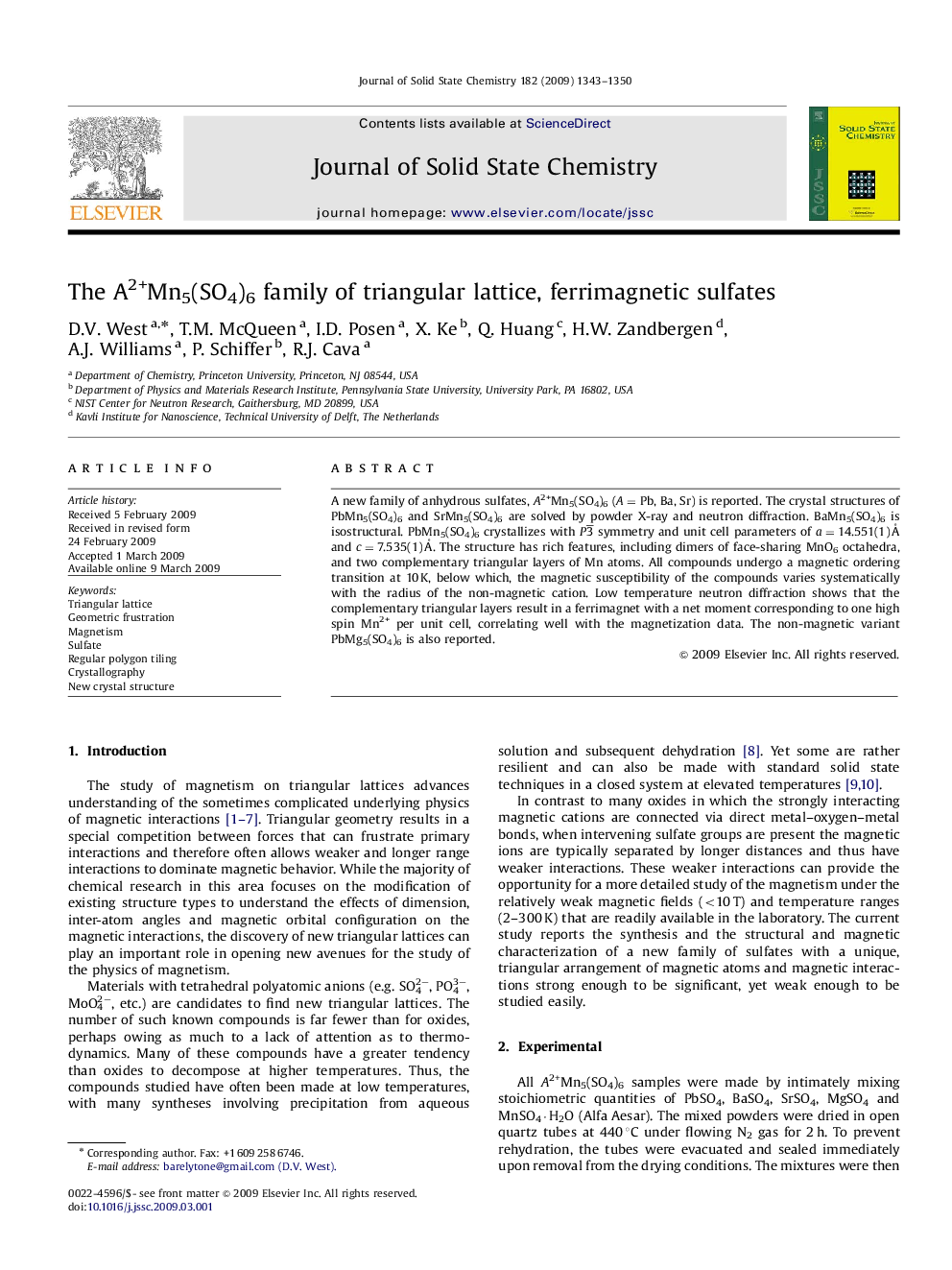| Article ID | Journal | Published Year | Pages | File Type |
|---|---|---|---|---|
| 1331813 | Journal of Solid State Chemistry | 2009 | 8 Pages |
A new family of anhydrous sulfates, A2+Mn5(SO4)6 (A=Pb, Ba, Sr) is reported. The crystal structures of PbMn5(SO4)6 and SrMn5(SO4)6 are solved by powder X-ray and neutron diffraction. BaMn5(SO4)6 is isostructural. PbMn5(SO4)6 crystallizes with P3¯ symmetry and unit cell parameters of a=14.551(1) Å and c=7.535(1) Å. The structure has rich features, including dimers of face-sharing MnO6 octahedra, and two complementary triangular layers of Mn atoms. All compounds undergo a magnetic ordering transition at 10 K, below which, the magnetic susceptibility of the compounds varies systematically with the radius of the non-magnetic cation. Low temperature neutron diffraction shows that the complementary triangular layers result in a ferrimagnet with a net moment corresponding to one high spin Mn2+ per unit cell, correlating well with the magnetization data. The non-magnetic variant PbMg5(SO4)6 is also reported.
Graphical abstractA new family sulfates, A2+Mn5(SO4)6 (A=Pb, Ba, Sr) is reported. Structures are solved by powder neutron diffraction. PbMn5(SO4)6 is trigonal with lattice parameters of a=14.551(1) Å and c=7.535(1) Å. The structure has dimers of face-sharing MnO6 octahedra, and two complementary triangular layers of Mn atoms that result in a ferrimagnet. All compounds magnetically order at 10 K. Low field susceptibility varies systematically with non-magnetic cation radius.Figure optionsDownload full-size imageDownload as PowerPoint slide
